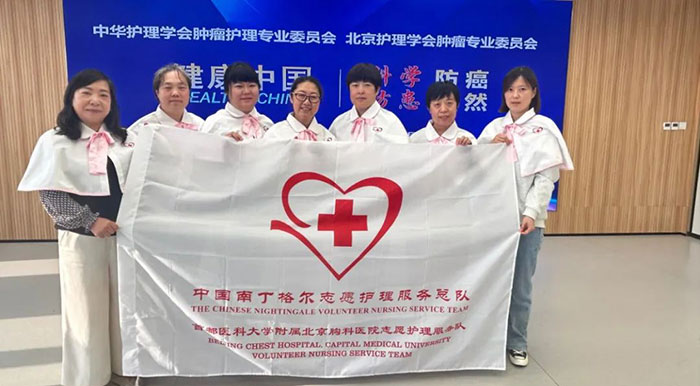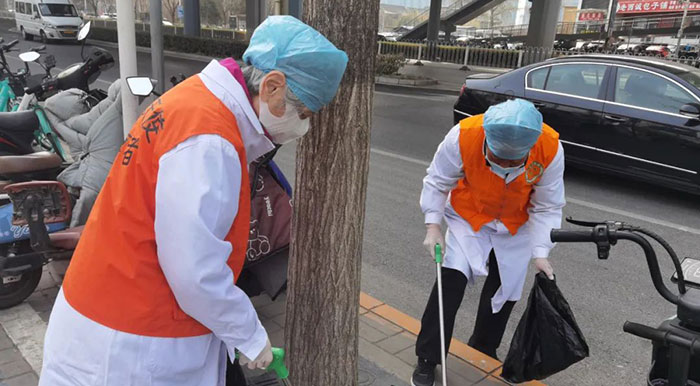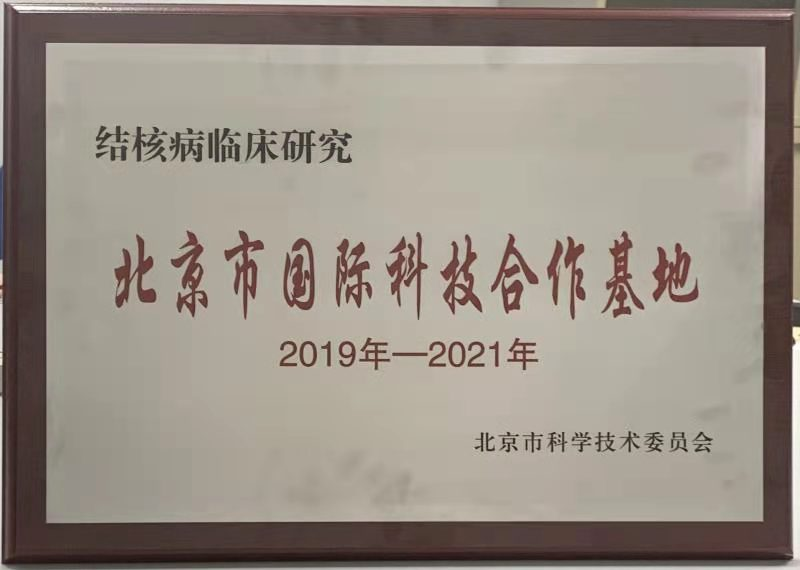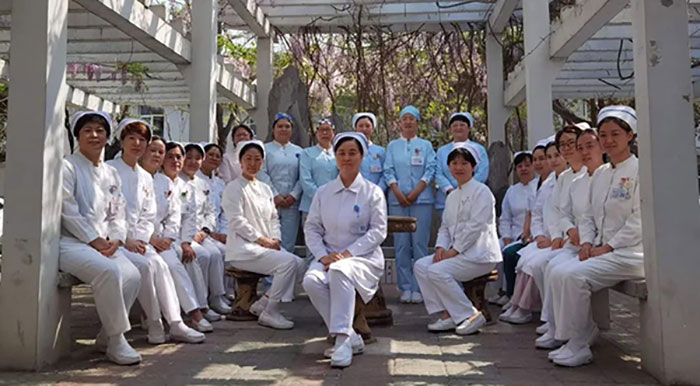2018年
No.24
Medical Abstracts
Keyword: lung cancer
1. N Engl J Med. 2018 Dec 6;379(23):2220-2229. doi: 10.1056/NEJMoa1809064. Epub 2018
Sep 25.
First-Line Atezolizumab plus Chemotherapy in Extensive-Stage Small-Cell Lung
Cancer.
Horn L, Mansfield AS, Szcz?sna A, Havel L, Krzakowski M, Hochmair MJ, Huemer F,
Losonczy G, Johnson ML, Nishio M, Reck M, Mok T, Lam S, Shames DS, Liu J, Ding B,
Lopez-Chavez A, Kabbinavar F, Lin W, Sandler A, Liu SV; IMpower133 Study Group.
BACKGROUND: Enhancing tumor-specific T-cell immunity by inhibiting programmed
death ligand 1 (PD-L1)-programmed death 1 (PD-1) signaling has shown promise in
the treatment of extensive-stage small-cell lung cancer. Combining checkpoint
inhibition with cytotoxic chemotherapy may have a synergistic effect and improve
efficacy.
METHODS: We conducted this double-blind, placebo-controlled, phase 3 trial to
evaluate atezolizumab plus carboplatin and etoposide in patients with
extensive-stage small-cell lung cancer who had not previously received treatment.
Patients were randomly assigned in a 1:1 ratio to receive carboplatin and
etoposide with either atezolizumab or placebo for four 21-day cycles (induction
phase), followed by a maintenance phase during which they received either
atezolizumab or placebo (according to the previous random assignment) until they
had unacceptable toxic effects, disease progression according to Response
Evaluation Criteria in Solid Tumors, version 1.1, or no additional clinical
benefit. The two primary end points were investigator-assessed progression-free
survival and overall survival in the intention-to-treat population.
RESULTS: A total of 201 patients were randomly assigned to the atezolizumab
group, and 202 patients to the placebo group. At a median follow-up of 13.9
months, the median overall survival was 12.3 months in the atezolizumab group and
10.3 months in the placebo group (hazard ratio for death, 0.70; 95% confidence
interval [CI], 0.54 to 0.91; P=0.007). The median progression-free survival was
5.2 months and 4.3 months, respectively (hazard ratio for disease progression or
death, 0.77; 95% CI, 0.62 to 0.96; P=0.02). The safety profile of atezolizumab
plus carboplatin and etoposide was consistent with the previously reported safety
profile of the individual agents, with no new findings observed.
CONCLUSIONS: The addition of atezolizumab to chemotherapy in the first-line
treatment of extensive-stage small-cell lung cancer resulted in significantly
longer overall survival and progression-free survival than chemotherapy alone.
(Funded by F. Hoffmann-La Roche/Genentech; IMpower133 ClinicalTrials.gov number,
NCT02763579 .).
DOI: 10.1056/NEJMoa1809064
PMID: 30280641 [Indexed for MEDLINE]
2. Cancer Cell. 2018 Dec 10;34(6):954-969.e4. doi: 10.1016/j.ccell.2018.11.007.
Targeting PKCδ as a Therapeutic Strategy against Heterogeneous Mechanisms of EGFR
Inhibitor Resistance in EGFR-Mutant Lung Cancer.
Lee PC(1), Fang YF(2), Yamaguchi H(1), Wang WJ(1), Chen TC(3), Hong X(4), Ke
B(1), Xia W(1), Wei Y(1), Zha Z(1), Wang Y(1), Kuo HP(5), Wang CW(3), Tu CY(6),
Chen CH(7), Huang WC(8), Chiang SF(9), Nie L(1), Hou J(1), Chen CT(1), Huo L(1),
Yang WH(1), Deng R(10), Nakai K(1), Hsu YH(1), Chang SS(1), Chiu TJ(11), Tang
J(10), Zhang R(12), Wang L(12), Fang B(12), Chen T(13), Wong KK(14), Hsu JL(15),
Hung MC(16).
Author information:
(1)Department of Molecular and Cellular Oncology, The University of Texas MD
Anderson Cancer Center, Houston, TX 77030, USA.
(2)Department of Molecular and Cellular Oncology, The University of Texas MD
Anderson Cancer Center, Houston, TX 77030, USA; Department of Thoracic Medicine,
Chang Gung Foundation, Chang Gung Memorial Hospital, Taoyuan 333, Taiwan;
Department of Pulmonary and Critical Care Medicine Saint Paul's Hospital, Taoyuan
City 33069, Taiwan; College of Medicine, Chang Gung University, Taoyuan 333,
Taiwan.
(3)College of Medicine, Chang Gung University, Taoyuan 333, Taiwan; Department of
Pathology, Chang Gung Foundation, Chang Gung Memorial Hospital, Taoyuan 333,
Taiwan.
Multiple mechanisms of resistance to epidermal growth factor receptor (EGFR)
tyrosine kinase inhibitors (TKIs) have been identified in EGFR-mutant non-small
cell lung cancer (NSCLC); however, recurrent resistance to EGFR TKIs due to the
heterogeneous mechanisms underlying resistance within a single patient remains a
major challenge in the clinic. Here, we report a role of nuclear protein kinase
Cδ (PKCδ) as a common axis across multiple known TKI-resistance mechanisms.
Specifically, we demonstrate that TKI-inactivated EGFR dimerizes with other
membrane receptors implicated in TKI resistance to promote PKCδ nuclear
translocation. Moreover, the level of nuclear PKCδ is associated with TKI
response in patients. The combined inhibition of PKCδ and EGFR induces marked
regression of resistant NSCLC tumors with EGFR mutations.
Copyright © 2018 Elsevier Inc. All rights reserved.
DOI: 10.1016/j.ccell.2018.11.007
PMID: 30537515
3. Lancet Oncol. 2018 Dec;19(12):1654-1667. doi: 10.1016/S1470-2045(18)30649-1. Epub 2018 Nov 6.
Lorlatinib in patients with ALK-positive non-small-cell lung cancer: results from
a global phase 2 study.
Solomon BJ(1), Besse B(2), Bauer TM(3), Felip E(4), Soo RA(5), Camidge DR(6),
Chiari R(7), Bearz A(8), Lin CC(9), Gadgeel SM(10), Riely GJ(11), Tan EH(12),
Seto T(13), James LP(14), Clancy JS(15), Abbattista A(16), Martini JF(17), Chen
J(14), Peltz G(18), Thurm H(17), Ou SI(19), Shaw AT(20).
Author information:
(1)Peter MacCallum Cancer Centre, Melbourne, VIC, Australia. Electronic address:
ben.solomon@petermac.org.
(2)Gustave Roussy Cancer Campus, Villejuif, France; Department of Cancer
Medicine, Paris-Sud University, Orsay, France.
(3)Sarah Cannon Cancer Research Institute/Tennessee Oncology, PLLC, Nashville,
TN, USA.
(4)Vall d'Hebron Institute of Oncology, Barcelona, Spain.
…
Erratum in
Lancet Oncol. 2019 Jan;20(1):e10.
BACKGROUND: Lorlatinib is a potent, brain-penetrant, third-generation inhibitor
of ALK and ROS1 tyrosine kinases with broad coverage of ALK mutations. In a phase
1 study, activity was seen in patients with ALK-positive non-small-cell lung
cancer, most of whom had CNS metastases and progression after ALK-directed
therapy. We aimed to analyse the overall and intracranial antitumour activity of
lorlatinib in patients with ALK-positive, advanced non-small-cell lung cancer.
METHODS: In this phase 2 study, patients with histologically or cytologically
ALK-positive or ROS1-positive, advanced, non-small-cell lung cancer, with or
without CNS metastases, with an Eastern Cooperative Oncology Group performance
status of 0, 1, or 2, and adequate end-organ function were eligible. Patients
were enrolled into six different expansion cohorts (EXP1-6) on the basis of ALK
and ROS1 status and previous therapy, and were given lorlatinib 100 mg orally
once daily continuously in 21-day cycles. The primary endpoint was overall and
intracranial tumour response by independent central review, assessed in pooled
subgroups of ALK-positive patients. Analyses of activity and safety were based on
the safety analysis set (ie, all patients who received at least one dose of
lorlatinib) as assessed by independent central review. Patients with measurable
CNS metastases at baseline by independent central review were included in the
intracranial activity analyses. In this report, we present lorlatinib activity
data for the ALK-positive patients (EXP1-5 only), and safety data for all treated
patients (EXP1-6). This study is ongoing and is registered with
ClinicalTrials.gov, number NCT01970865.
FINDINGS: Between Sept 15, 2015, and Oct 3, 2016, 276 patients were enrolled: 30
who were ALK positive and treatment naive (EXP1); 59 who were ALK positive and
received previous crizotinib without (n=27; EXP2) or with (n=32; EXP3A) previous
chemotherapy; 28 who were ALK positive and received one previous non-crizotinib
ALK tyrosine kinase inhibitor, with or without chemotherapy (EXP3B); 112 who were
ALK positive with two (n=66; EXP4) or three (n=46; EXP5) previous ALK tyrosine
kinase inhibitors with or without chemotherapy; and 47 who were ROS1 positive
with any previous treatment (EXP6). One patient in EXP4 died before receiving
lorlatinib and was excluded from the safety analysis set. In treatment-naive
patients (EXP1), an objective response was achieved in 27 (90·0%; 95% CI
73·5-97·9) of 30 patients. Three patients in EXP1 had measurable baseline CNS
lesions per independent central review, and objective intracranial responses were
observed in two (66·7%; 95% CI 9·4-99·2). In ALK-positive patients with at least
one previous ALK tyrosine kinase inhibitor (EXP2-5), objective responses were
achieved in 93 (47·0%; 39·9-54·2) of 198 patients and objective intracranial
response in those with measurable baseline CNS lesions in 51 (63·0%; 51·5-73·4)
of 81 patients. Objective response was achieved in 41 (69·5%; 95% CI 56·1-80·8)
of 59 patients who had only received previous crizotinib (EXP2-3A), nine (32·1%;
15·9-52·4) of 28 patients with one previous non-crizotinib ALK tyrosine kinase
inhibitor (EXP3B), and 43 (38·7%; 29·6-48·5) of 111 patients with two or more
previous ALK tyrosine kinase inhibitors (EXP4-5). Objective intracranial response
was achieved in 20 (87·0%; 95% CI 66·4-97·2) of 23 patients with measurable
baseline CNS lesions in EXP2-3A, five (55·6%; 21·2-86·3) of nine patients in
EXP3B, and 26 (53·1%; 38·3-67·5) of 49 patients in EXP4-5. The most common
treatment-related adverse events across all patients were hypercholesterolaemia
(224 [81%] of 275 patients overall and 43 [16%] grade 3-4) and
hypertriglyceridaemia (166 [60%] overall and 43 [16%] grade 3-4). Serious
treatment-related adverse events occurred in 19 (7%) of 275 patients and seven
patients (3%) permanently discontinued treatment because of treatment-related
adverse events. No treatment-related deaths were reported.
INTERPRETATION: Consistent with its broad ALK mutational coverage and CNS
penetration, lorlatinib showed substantial overall and intracranial activity both
in treatment-naive patients with ALK-positive non-small-cell lung cancer, and in
those who had progressed on crizotinib, second-generation ALK tyrosine kinase
inhibitors, or after up to three previous ALK tyrosine kinase inhibitors. Thus,
lorlatinib could represent an effective treatment option for patients with
ALK-positive non-small-cell lung cancer in first-line or subsequent therapy.
FUNDING: Pfizer.
Copyright © 2018 Elsevier Ltd. All rights reserved.
DOI: 10.1016/S1470-2045(18)30649-1
PMID: 30413378
4. Nat Med. 2018 Dec;24(12):1845-1851. doi: 10.1038/s41591-018-0232-2. Epub 2018 Nov 5.
Radiotherapy induces responses of lung cancer to CTLA-4 blockade.
Formenti SC(1), Rudqvist NP(2), Golden E(2)(3), Cooper B(4), Wennerberg E(2),
Lhuillier C(2), Vanpouille-Box C(2), Friedman K(5), Ferrari de Andrade L(6)(7),
Wucherpfennig KW(6)(7), Heguy A(8)(9), Imai N(10), Gnjatic S(10), Emerson RO(11),
Zhou XK(12), Zhang T(13), Chachoua A(14), Demaria S(15)(16).
Author information:
(1)Department of Radiation Oncology, Weill Cornell Medicine, New York, NY, USA.
formenti@med.cornell.edu.
(2)Department of Radiation Oncology, Weill Cornell Medicine, New York, NY, USA.
(3)Department of Radiation Oncology, University of California, San Francisco, CA,
USA.
(4)Department of Radiation Oncology, New York University School of Medicine, New
York, NY, USA.
…
Focal radiation therapy enhances systemic responses to anti-CTLA-4 antibodies in
preclinical studies and in some patients with melanoma1-3, but its efficacy in
inducing systemic responses (abscopal responses) against tumors unresponsive to
CTLA-4 blockade remained uncertain. Radiation therapy promotes the activation of
anti-tumor T cells, an effect dependent on type I interferon induction in the
irradiated tumor4-6. The latter is essential for achieving abscopal responses in
murine cancers6. The mechanisms underlying abscopal responses in patients treated
with radiation therapy and CTLA-4 blockade remain unclear. Here we report that
radiation therapy and CTLA-4 blockade induced systemic anti-tumor T cells in
chemo-refractory metastatic non-small-cell lung cancer (NSCLC), where anti-CTLA-4
antibodies had failed to demonstrate significant efficacy alone or in combination
with chemotherapy7,8. Objective responses were observed in 18% of enrolled
patients, and 31% had disease control. Increased serum interferon-β after
radiation and early dynamic changes of blood T cell clones were the strongest
response predictors, confirming preclinical mechanistic data. Functional analysis
in one responding patient showed the rapid in vivo expansion of CD8 T cells
recognizing a neoantigen encoded in a gene upregulated by radiation, supporting
the hypothesis that one explanation for the abscopal response is
radiation-induced exposure of immunogenic mutations to the immune system.
DOI: 10.1038/s41591-018-0232-2
PMCID: PMC6286242 [Available on 2019-05-05]
PMID: 30397353
5. Cell Metab. 2018 Dec 21. pii: S1550-4131(18)30748-4. doi:
10.1016/j.cmet.2018.12.011. [Epub ahead of print]
AMPK-Mediated Lysosome Biogenesis in Lung Cancer Growth.
Patra KC(1), Weerasekara VK(1), Bardeesy N(2).
Author information:
(1)Massachusetts General Hospital Cancer Center, Harvard Medical School, Boston,
MA 02114, USA; Center for Regenerative Medicine, Massachusetts General Hospital,
Harvard Medical School, Boston, MA 02114, USA; Broad Institute of Harvard and
Massachusetts Institute of Technology, Boston, MA 02113, USA.
(2)Massachusetts General Hospital Cancer Center, Harvard Medical School, Boston,
MA 02114, USA; Center for Regenerative Medicine, Massachusetts General Hospital,
Harvard Medical School, Boston, MA 02114, USA; Broad Institute of Harvard and
Massachusetts Institute of Technology, Boston, MA 02113, USA. Electronic address:
bardeesy.nabeel@mgh.harvard.edu.
Cancer cells must adapt to metabolic stress during tumor progression. In this
issue of Cell Metabolism, Eichner et al. (2019) report that lung cancer
development in genetically engineered mice requires the energy sensor
AMP-activated protein kinase (AMPK). Their findings suggest that AMPK-mediated
induction of lysosomal function supports cancer cell fitness, particularly during
the early stages of tumorigenesis.
Copyright © 2018. Published by Elsevier Inc.
DOI: 10.1016/j.cmet.2018.12.011
PMID: 30612899
6. J Clin Invest. 2018 Dec 27. pii: 123319. doi: 10.1172/JCI123319. [Epub ahead of
print]
PARP inhibition enhances tumor cell-intrinsic immunity in ERCC1-deficient
non-small cell lung cancer.
Chabanon RM, Muirhead G, Krastev DB, Adam J, Morel D, Garrido M, Lamb A, Hénon C,
Dorvault N, Rouanne M, Marlow R, Bajrami I, Cardeñosa ML, Konde A, Besse B,
Ashworth A, Pettitt SJ, Haider S, Marabelle A, Tutt AN, Soria JC, Lord CJ,
Postel-Vinay S.
The cyclic GMP-AMP synthase-stimulator of interferon genes (cGAS/STING) pathway
detects cytosolic DNA to activate innate immune responses. Poly(ADP-ribose)
polymerase inhibitors (PARPi) selectively target cancer cells with DNA repair
deficiencies such as those caused by BRCA1 mutations or ERCC1 defects. Using
isogenic cell lines and patient-derived samples, we showed that ERCC1-defective
non-small cell lung cancer (NSCLC) cells exhibit an enhanced type I interferon
transcriptomic signature, and that low ERCC1 expression correlates with increased
lymphocytic infiltration. We demonstrated that clinical PARPi, including olaparib
and rucaparib, have cell-autonomous immunomodulatory properties in
ERCC1-defective NSCLC and BRCA1-defective triple-negative breast cancer (TNBC)
cells. Mechanistically, PARPi generated cytoplasmic chromatin fragments with
micronuclei characteristics; these were found to activate cGAS/STING, downstream
type I interferon signaling and CCL5 secretion. Importantly, these effects were
suppressed in PARP1-null TNBC cells, suggesting that this phenotype resulted from
an on-target effect of PARPi on PARP1. PARPi also potentiated
interferon-γ-induced PD-L1 expression in NSCLC cell lines and in fresh patient
tumor cells; this effect was enhanced in ERCC1-deficient contexts. Our data
provide the preclinical rationale for using PARPi as immunomodulatory agents in
appropriately molecularly-selected populations.
DOI: 10.1172/JCI123319
PMID: 30589644
7. Nat Commun. 2018 Dec 18;9(1):5361. doi: 10.1038/s41467-018-07767-w.
Local mutational diversity drives intratumoral immune heterogeneity in non-small
cell lung cancer.
Jia Q(1)(2), Wu W(3), Wang Y(4), Alexander PB(5), Sun C(1)(2), Gong Z(1)(2),
Cheng JN(1)(2)(6), Sun H(4), Guan Y(4), Xia X(4)(7), Yang L(4), Yi X(4), Wan
YY(8), Wang H(3), He J(9), Futreal PA(10), Li QJ(11)(12), Zhu B(13)(14).
Author information:
(1)Institute of Cancer, Xinqiao Hospital, Third Military Medical University,
Chongqing, 400037, China.
(2)Chongqing Key Laboratory of Tumor Immunotherapy, Chongqing, 400037, China.
(3)Department of Cardiothorathic Surgery, Southwest Hospital, Third Military
Medical University, Chongqing, 400038, China.
…
Combining whole exome sequencing, transcriptome profiling, and T cell repertoire
analysis, we investigate the spatial features of surgically-removed biopsies from
multiple loci in tumor masses of 15 patients with non-small cell lung cancer
(NSCLC). This revealed that the immune microenvironment has high spatial
heterogeneity such that intratumoral regional variation is as large as
inter-personal variation. While the local total mutational burden (TMB) is
associated with local T-cell clonal expansion, local anti-tumor cytotoxicity does
not directly correlate with neoantigen abundance. Together, these findings
caution against that immunological signatures can be predicted solely from TMB or
microenvironmental analysis from a single locus biopsy.
DOI: 10.1038/s41467-018-07767-w
PMCID: PMC6299138
PMID: 30560866 [Indexed for MEDLINE]
8. J Clin Oncol. 2018 Dec 14:JCO1801585. doi: 10.1200/JCO.18.01585. [Epub ahead of
print]
EGFR-Mutant Adenocarcinomas That Transform to Small-Cell Lung Cancer and Other
Neuroendocrine Carcinomas: Clinical Outcomes.
Marcoux N(1)(2), Gettinger SN(3), O'Kane G(4), Arbour KC(5), Neal JW(6), Husain
H(7), Evans TL(8)(2), Brahmer JR(9), Muzikansky A(1), Bonomi PD(10), Del Prete
S(11), Wurtz A(3), Farago AF(1), Dias-Santagata D(1), Mino-Kenudson M(1), Reckamp
KL(2), Yu HA(5), Wakelee HA(6), Shepherd FA(4), Piotrowska Z(1), Sequist LV(1).
Author information:
(1)1 Massachusetts General Hospital, Boston, MA.
(2)11 City of Hope National Medical Center, Duarte, CA.
(3)2 Yale Cancer Center, New Haven, CT.
(4)3 Princess Margaret Cancer Centre, Toronto, Ontario, Canada.
…
PURPOSE: Approximately 3% to 10% of EGFR (epidermal growth factor receptor)
-mutant non-small cell lung cancers (NSCLCs) undergo transformation to small-cell
lung cancer (SCLC), but their clinical course is poorly characterized.
METHODS: We retrospectively identified patients with EGFR-mutant SCLC and other
high-grade neuroendocrine carcinomas seen at our eight institutions.
Demographics, disease features, and outcomes were analyzed.
RESULTS: We included 67 patients-38 women and 29 men; EGFR mutations included
exon 19 deletion (69%), L858R (25%), and other (6%). At the initial lung cancer
diagnosis, 58 patients had NSCLC and nine had de novo SCLC or mixed histology.
All but these nine patients received one or more EGFR tyrosine kinase inhibitor
before SCLC transformation. Median time to transformation was 17.8 months (95%
CI, 14.3 to 26.2 months). After transformation, both platinum-etoposide and
taxanes yielded high response rates, but none of 17 patients who received
immunotherapy experienced a response. Median overall survival since diagnosis was
31.5 months (95% CI, 24.8 to 41.3 months), whereas median survival since the time
of SCLC transformation was 10.9 months (95% CI, 8.0 to 13.7 months). Fifty-nine
patients had tissue genotyping at first evidence of SCLC. All maintained their
founder EGFR mutation, and 15 of 19 with prior EGFR T790M positivity were T790
wild-type at transformation. Other recurrent mutations included TP53, Rb1, and
PIK3CA. Re-emergence of NSCLC clones was identified in some cases. CNS metastases
were frequent after transformation.
CONCLUSION: There is a growing appreciation that EGFR-mutant NSCLCs can undergo
SCLC transformation. We demonstrate that this occurs at an average of 17.8 months
after diagnosis and cases are often characterized by Rb1, TP53, and PIK3CA
mutations. Responses to platinum-etoposide and taxanes are frequent, but
checkpoint inhibitors yielded no responses. Additional investigation is needed to
better elucidate optimal strategies for this group.
DOI: 10.1200/JCO.18.01585
PMID: 30550363
9. J Clin Oncol. 2019 Jan 20;37(3):222-229. doi: 10.1200/JCO.18.00264. Epub 2018 Dec 5.
Randomized Phase II Trial of Cisplatin and Etoposide in Combination With
Veliparib or Placebo for Extensive-Stage Small-Cell Lung Cancer: ECOG-ACRIN 2511
Study.
Owonikoko TK(1), Dahlberg SE(2), Sica GL(1), Wagner LI(3), Wade JL 3rd(4),
Srkalovic G(5), Lash BW(6), Leach JW(7), Leal TB(8), Aggarwal C(9), Ramalingam
SS(1).
Author information:
(1)1 Emory University, Atlanta, GA.
(2)2 Dana-Farber Cancer Institute, Boston, MA.
(3)3 Northwestern University, Chicago, IL.
(4)4 Decatur Memorial Hospital, Decatur, IL.
…
PURPOSE: Veliparib, a poly (ADP ribose) polymerase inhibitor, potentiated
standard chemotherapy against small-cell lung cancer (SCLC) in preclinical
studies. We evaluated the combination of veliparib with cisplatin and etoposide
(CE; CE+V) doublet in untreated, extensive-stage SCLC (ES-SCLC).
MATERIALS AND METHODS: Patients with ES-SCLC, stratified by sex and serum lactate
dehydrogenase levels, were randomly assigned to receive four 3-week cycles of CE
(75 mg/m2 intravenously on day 1 and 100 mg/m2 on days 1 through 3) along with
veliparib (100 mg orally twice per day on days 1 through 7) or placebo (CE+P).
The primary end point was progression-free survival (PFS). Using an overall
one-sided 0.10-level log-rank test, the study had 88% power to demonstrate a
37.5% reduction in the PFS hazard rate.
RESULTS: A total of 128 eligible patients received treatment on protocol. The
median age was 66 years, 52% of patients were men, and Eastern Cooperative
Oncology Group performance status was 0 for 29% of patients and 1 for 71%. The
respective median PFS for the CE+V arm versus the CE+P arm was 6.1 versus 5.5
months (unstratified hazard ratio [HR], 0.75 [one-sided P = .06]; stratified HR,
0.63 [one-sided P = .01]), favoring CE+V. The median overall survival was 10.3
versus 8.9 months (stratified HR, 0.83; 80% CI, 0.64 to 1.07; one-sided P = .17)
for the CE+V and CE+P arms, respectively. The overall response rate was 71.9%
versus 65.6% (two-sided P = .57) for CE+V and CE+P, respectively. There was a
significant treatment-by-strata interaction in PFS: Male patients with high
lactate dehydrogenase levels derived significant benefit (PFS HR, 0.34; 80% CI,
0.22 to 0.51) but there was no evidence of benefit among patients in other strata
(PFS HR, 0.81; 80% CI, 0.60 to 1.09). The following grade ≥ 3 hematology
toxicities were more frequent in the CE+V arm than the CE+P arm: CD4 lymphopenia
(8% v 0%; P = .06) and neutropenia (49% v 32%; P = .08), but treatment delivery
was comparable.
CONCLUSION: The addition of veliparib to frontline chemotherapy showed signal of
efficacy in patients with ES-SCLC and the study met its prespecified end point.
DOI: 10.1200/JCO.18.00264
PMID: 30523756
10. J Exp Med. 2018 Dec 3;215(12):3115-3135. doi: 10.1084/jem.20180801. Epub 2018 Nov 28.
Ezh2 inhibition in Kras-driven lung cancer amplifies inflammation and associated
vulnerabilities.
Serresi M(1), Siteur B(2), Hulsman D(3)(4), Company C(1), Schmitt MJ(1), Lieftink
C(5), Morris B(5), Cesaroni M(6), Proost N(2), Beijersbergen RL(5), van Lohuizen
M(7)(4), Gargiulo G(8).
Author information:
(1)Molecular Oncology, Max Delbrück Center for Molecular Medicine in the
Helmholtz Association, Berlin, Germany.
(2)Mouse Cancer Clinic, Netherlands Cancer Institute, Amsterdam, Netherlands.
(3)Division of Molecular Genetics and Cancer Genomics Centre, Netherlands Cancer
Institute, Amsterdam, Netherlands.
…
Kras-driven non-small-cell lung cancers (NSCLCs) are a leading cause of death
with limited therapeutic options. Many NSCLCs exhibit high levels of Ezh2, the
enzymatic subunit of polycomb repressive complex 2 (PRC2). We tested Ezh2
inhibitors as single agents or before chemotherapy in mice with orthotopic
Kras-driven NSCLC grafts, which homogeneously express Ezh2. These tumors display
sensitivity to EZH2 inhibition by GSK126 but also amplify an inflammatory program
involving signaling through NF-κB and genes residing in PRC2-regulated chromatin.
During this process, tumor cells overcome GSK126 antiproliferative effects. We
identified oncogenes that may mediate progression through an in vivo RNAi screen
aimed at targets of PRC2/NF-κB. An in vitro compound screening linked
GSK126-driven inflammation and therapeutic vulnerability in human cells to
regulation of RNA synthesis and proteostasis. Interestingly, GSK126-treated
NSCLCs in vivo also showed an enhanced response to a combination of nimesulide
and bortezomib. Thus, Ezh2 inhibition may restrict cell proliferation and promote
defined adaptive responses. Targeting these responses potentially improves
outcomes in Kras-driven NSCLCs.
© 2018 Serresi et al.
DOI: 10.1084/jem.20180801
PMCID: PMC6279402
PMID: 30487290
11. Adv Mater. 2018 Dec;30(51):e1805437. doi: 10.1002/adma.201805437. Epub 2018 Oct
21.
Construction of a Novel Bispecific Antibody to Enhance Antitumor Activity against
Lung Cancer.
Yin W(1), Zhu J(2), Gonzalez-Rivas D(2)(3), Okumura M(4), Rocco G(5), Pass H(6),
Jiang G(2), Yang Y(2)(7).
Author information:
(1)Key laboratory of Oral Biomedical engineering of Ministry of education,
Hospital of Stomatology, School of Stomatology, Wuhan University, Wuhan, 430079,
China.
(2)Department of Thoracic Surgery, Shanghai Pulmonary Hospital, 507 Zhengmin
Road, Shanghai, 200433, China.
(3)Department of thoracic surgery and Minimally Invasive Thoracic Surgery Unit
(UCTMI). Coruña University Hospital, Coruña, 15706, Spain.
…
HER2 and VEGF are closely related to the progression of several tumors. The
inhibitor simultaneously targeting these two proteins will effectively inhibit
the progression of tumors. Here, a bispecific antibody, termed as YY0411,
targeting both HER2 and VEGF as a potent anticancer therapeutic antibody is
reported. YY0411 is the first bispecific antibody constructed in IgG-Decoy
receptor format. It efficiently identifies and combines both HER2 and VEGF
protein. YY0411 is believed to be a candidate tumor suppressor as it
significantly inhibits the colony formation ability of human cancer cells
(Calu-3, MDA-MB-453, and NCI-N87 cells). The phosphorylation of HER2 and VEGF
downstream components are also decreased in these cells with the treatment of
YY0411. Similar to other antibodies, YY0411 has the ability to promote the
secretion of IFN-γ by T lymphocytes. In addition, YY0411 significantly inhibits
the growth of Calu-3 cells-induced xenograft in nude mice. This work demonstrates
that YY0411 may be a potential anti-lung cancer drug.
© 2018 WILEY-VCH Verlag GmbH & Co. KGaA, Weinheim.
DOI: 10.1002/adma.201805437
PMID: 30345557
12. Cancer Discov. 2018 Dec;8(12):1598-1613. doi: 10.1158/2159-8290.CD-18-0277. Epub 2018 Sep 25.
Exploiting MCL1 Dependency with Combination MEK + MCL1 Inhibitors Leads to
Induction of Apoptosis and Tumor Regression in KRAS-Mutant Non-Small Cell Lung
Cancer.
Nangia V(#)(1), Siddiqui FM(#)(1), Caenepeel S(2), Timonina D(1), Bilton SJ(1),
Phan N(1), Gomez-Caraballo M(1), Archibald HL(1), Li C(1), Fraser C(3), Rigas
D(2), Vajda K(1), Ferris LA(1), Lanuti M(4), Wright CD(4), Raskin KA(5), Cahill
DP(6), Shin JH(6), Keyes C(7), Sequist LV(8)(9), Piotrowska Z(8)(9), Farago
AF(8)(9), Azzoli CG(8)(9), Gainor JF(8)(9), Sarosiek KA(3), Brown SP(10), Coxon
A(2), Benes CH(1)(9), Hughes PE(2), Hata AN(11)(8)(9).
Author information:
(1)Massachusetts General Hospital Cancer Center, Charlestown, Massachusetts.
(2)Department of Oncology Research, Amgen, Thousand Oaks, California.
(3)Department of Environmental Health, Harvard T. H. Chan School of Public
Health, Boston, Massachusetts.
(4)Department of Surgery, Massachusetts General Hospital, Boston, Massachusetts.
…
: BH3 mimetic drugs, which inhibit prosurvival BCL2 family proteins, have limited
single-agent activity in solid tumor models. The potential of BH3 mimetics for
these cancers may depend on their ability to potentiate the apoptotic response to
chemotherapy and targeted therapies. Using a novel class of potent and selective
MCL1 inhibitors, we demonstrate that concurrent MEK + MCL1 inhibition induces
apoptosis and tumor regression in KRAS-mutant non-small cell lung cancer (NSCLC)
models, which respond poorly to MEK inhibition alone. Susceptibility to BH3
mimetics that target either MCL1 or BCL-xL was determined by the differential
binding of proapoptotic BCL2 proteins to MCL1 or BCL-xL, respectively. The
efficacy of dual MEK + MCL1 blockade was augmented by prior transient exposure to
BCL-xL inhibitors, which promotes the binding of proapoptotic BCL2 proteins to
MCL1. This suggests a novel strategy for integrating BH3 mimetics that target
different BCL2 family proteins for KRAS-mutant NSCLC. SIGNIFICANCE: Defining the
molecular basis for MCL1 versus BCL-xL dependency will be essential for effective
prioritization of BH3 mimetic combination therapies in the clinic. We discover a
novel strategy for integrating BCL-xL and MCL1 inhibitors to drive and
subsequently exploit apoptotic dependencies of KRAS-mutant NSCLCs treated with
MEK inhibitors.See related commentary by Leber et al., p. 1511.This article is
highlighted in the In This Issue feature, p. 1494.
©2018 American Association for Cancer Research.
DOI: 10.1158/2159-8290.CD-18-0277
PMCID: PMC6279543 [Available on 2019-12-01]
PMID: 30254092
下一篇: No.23









.jpg)











